DIY Blood Sampling for Pediatric Clinical Trials—The Patients Perspective
A recent survey shows that 40% of pediatric trials conducted between 2008 and 2011 were never finished or published. One of the main challenges is the need to collect multiple sequential blood samples. Which, mircosampling, could be the answer to.

Conducting trials in pediatric populations is mandated by the Pediatric Research Equity Act and the European Pediatric Regulation (EC) 1901/2006 as a means of protecting public health by ensuring the safety and effectiveness of medications for children.1, 2 However, a recent survey shows that conducting pediatric clinical trials is challenging and that 40% of the trials conducted between 2008 and 2011 were never finished or finished but never published.3 The main challenges have been identified and classified as falling under four categories: ethical, physiological, pharmacometric and economic.4 It is not the intent of this article to review these individually, however, one of the challenging requirements of such trials is the need to collect multiple sequential blood samples to understand the pharmacokinetics of the drug being studied (in addition to the routine safety blood draws collected for hematology and blood chemistry profiles.) Over the present decade, techniques that enable the collection of small volumes of blood (generally less than 50 µL), referred to as microsampling, have been successfully incorporated into the workflow supporting both preclinical and clinical drug development.5, 6
Regulators in the U.S. and Europe are promoting the inclusion of patient involvement in drug development. U.S. legislation including PDUFA V, FDASIA, PDUFA VI, and MDUFA IV introduced new requirements for FDA patient-focused drug development (PFDD) efforts. PFDD is a systematic approach to help ensure that patients’ experiences, perspectives, needs, and priorities are captured and meaningfully incorporated into drug development and evaluation.7 In pediatric research, PFDD includes gaining the perspective of youth and parents or caregivers. The European Pediatric Regulation (EC) No 1902/2006 as amended, includes a European Medical Agency (EMA) responsibility to consult the views and opinions of children and young people.8 This paper will report the efforts to obtain youth and parent perspective on the concept of microsampling in pediatric clinical trials.
Microsampling
One of the major advantages of microsampling is the ability to collect blood samples without the need for a visit to the clinic and without the involvement of a nurse or phlebotomist, i.e., the sample can be collected at home. This would be a significant deviation from the current clinical trial operational paradigm. The transformation from a “clinic-centric” to a more “patient-centric” operation has been viewed as a significant leap that would make clinical trials more attractive and “patient-friendly” and could lead to faster enrollment and potentially better patient compliance. Therefore, it was important to understand the patient’s (and their parent's) perspective on the acceptance of microsampling (being responsible for collecting their samples) and to identify challenges, concerns, etc.
This report captures perspectives collected from a group of parent volunteers (parents of children with either chronic diseases or on-going medical needs) and from a group of youth that attended the International Children's Advisory Network Fourth Annual Research & Advocacy Summit (in Edinburgh, Scotland on July 12, 2018) a majority of whom live with chronic health conditions.
For the purpose of this exercise, we selected the Neoteryx Mitra microsampling device, which collects two 10 µL samples of blood from a finger stick.9 The commercially available kit (from Neoteryx) was demonstrated and used as the technique during this evaluation (Figure 1).
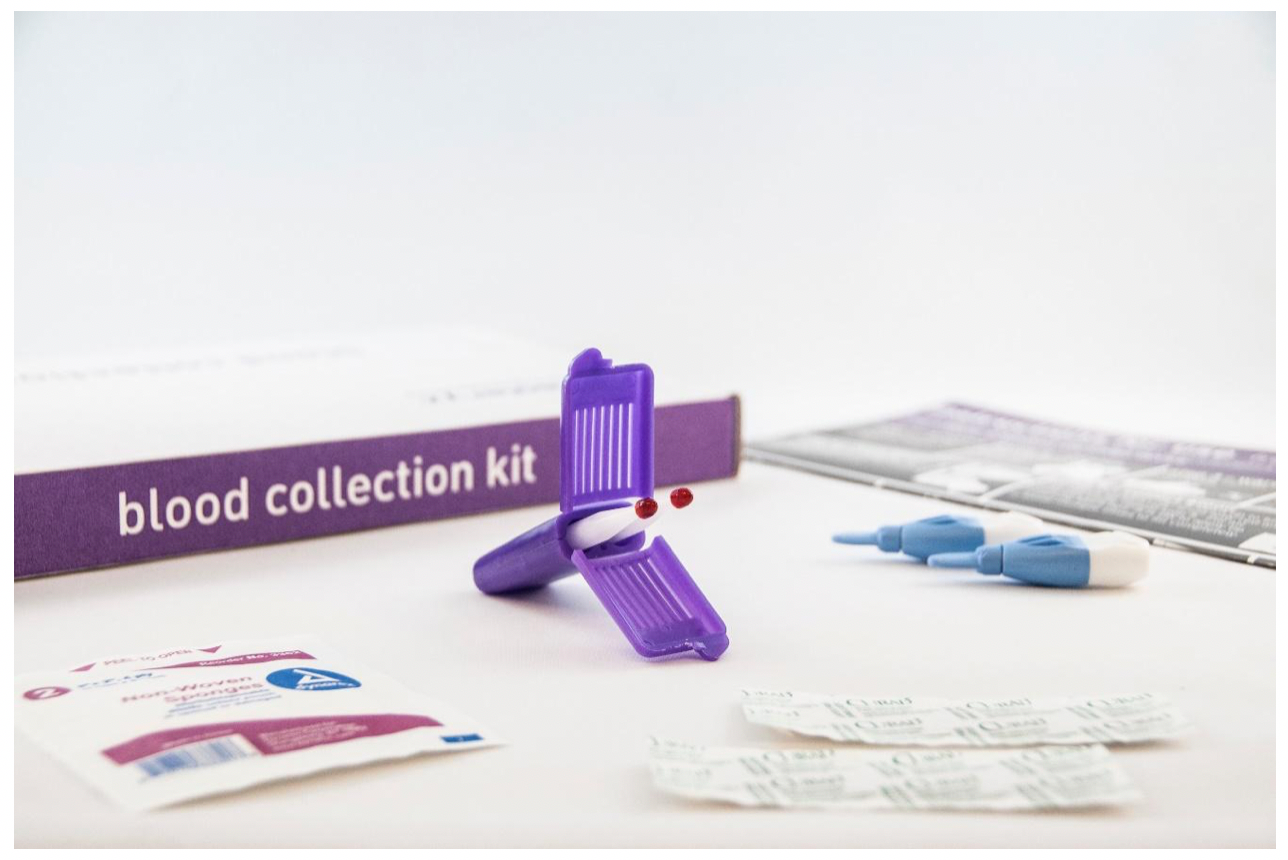
Figure 1: The Neoteryx Mitra microsampling kit.
Parent focus group
A parent volunteer group was established at Eli Lilly and Company (Lilly) to leverage a diverse global workforce to better understand the parent perspective on clinical research involving children. The Lilly Parent Volunteer database consists of self-identified employees with a child that had a chronic medical condition or is living with a medical condition and have volunteered to be contacted when the need arises to provide a parent’s perspective on pediatric research. The program was established to gain experience in approaching parents for participation in pediatric drug development with the goal to expand the approach external to Lilly by seeking additional perspectives via youth and parent advocacy groups.
Volunteers for the microsampling parent focus group were drawn from the Lilly Parent Volunteer database, and seven volunteers participated in a focus group activity. All the volunteers were parents and employees of Eli Lilly and Company with children ranging in ages spanning from seven years to adult who had one of the following conditions: type 1 diabetes, auto-immune disease, pediatric cancer, or genetic disorder. The Mitra blood sampling device was introduced and demonstrated. The demonstration included a description of the kit contents, training material, and included the viewing of a training video provided by Neoteryx, (see Figure 1.)9 The volunteers were then asked to consider their own use-as if in a clinical trial-where they would need to collect blood samples at home over several days with flexibility on the sampling times. Group activity included solicitation of feedback on pros and cons and questions and concerns relating to using the device on their children. Specific feedback was sought on the ease of use, type of lancet and location of stick, training, documenting the date and time, and handling the samples collected at home.
Parent focus group perspectives: Parents were enthusiastic and supported using a microsampling device for blood sampling, especially if multiple samples were needed. They all inquired “why aren’t we using this?” Numerous reasons were cited as highlights of the technique including the use of smaller amount of blood (microliters vs. milliliters in blood volume), the procedure being less painful (lancet vs. needle stick), convenience (ability to sample when they want at home vs. at a specified time in a clinic), less burden on the family (no time off from school or work), and limiting collection to only what is needed. The parent concerns cited included the age of child as related to the parent having to poke the child (may be difficult with very young children), too many steps in process-wipe with alcohol, poke, wipe off first drop, then collect blood, etc. The parents also suggested some form of reward for the child, for example, a Medical Hero wrist band (to recognize the importance of the contribution and participation in the trial).
Lancet: The discussions indicated that the type of lancet is key-especially for the younger children. Some, especially children living with diabetes, may have a type they prefer (or own). Patients may need to test lancets for usability, comfort, volume, what gauge gives correct volume with less pain, adjustable depth, etc.
Location of stick: It was also pointed out that the location of stick was important since some children may not want to see their finger pricked. Suggested alternatives to finger stick were heel, back, palm, shoulder, and ear lobe. It was indicated that children living with diabetes may be more familiar with and willing to do finger sticks.
Training: The importance of training (parent, caregiver, child), as well as the need for reminders/follow-up, was listed as important. The inclusion of additional tips for training was recommended. Suggested reminder/follow-up options included frequent reminders such as a phone call, text, or email with clear bullet point instructions which could be laminated, refrigerator magnet reminders, and/or a family calendar with dates and times. There was a preference to make the requisition form electronic as opposed to paper and some concern of keeping/storing the collected samples at home until the next clinic visit. Another suggestion would be to have quick return mailers for each kit to enable prompt mailing directly to the clinic or lab.
Limitations: It is important to note that this group of parent volunteers was highly educated and a motivated group of individuals employed in the pharmaceutical industry and therefore might not be representative. On the other hand, they might be representative of parents who would enroll a child in a trial. Most of the parents had children with T1DM experience so they were more experienced with finger sticks.
International Children’s Advisory Network focus group
The International Children's Advisory Network (iCAN) is a worldwide consortium of children’s advisory groups, known as Kids Impacting Disease Through Science (KIDS Chapter) and Young Persons Advisory Groups (YPAGS). These dedicated youth member groups work in unison around the world to provide a voice for children and families in medicine, research, and innovation. Each year iCAN holds a Research & Advocacy Summit to provide learning opportunities for youth members to learn from one another and to network with global research professionals; and for the scientific community an opportunity to directly engage with children and parents, to learn about the value and the significant importance of the influence of children on research, medicine, and innovation.10
A protocol to collect perspectives on patient-focused drug development and research was developed to be used at the 2018 iCAN Annual Summit Workshops. The protocol focused on an option for self-home-collection of finger stick blood samples vs a in-clinic sample collection during a clinical trial. The focus group activity was exempt from requiring IRB approval based on criteria set forth by NHS Health Research Authority of the UK.
Thirty-two children/youth ranging in ages between 10 and 22 years volunteered to participate in the activity. Seventeen identified themselves as from North America, 12 from Europe and three from other geographies. Most iCAN participants are youth with chronic health conditions; however, the data on specific conditions was not collected. The data collected during the exercise were de-identified (anonymized). The exercise started by having the participants describe typical school day activities and then what is changed-additional things required or prohibited-when the typical school day includes a visit to the doctor or clinic for a blood test. Following that, the home blood sampling option-a do-it-yourself (or by-parent) option using a finger-stick to collect a small amount of blood-was described via a video, and the at-home blood sampling kits were given to the participants to examine. No finger sticks were conducted as part of this activity. The participants were then asked to describe how their activities in a typical day would change; additional things required or prohibited, if they were doing a finger stick for the collection of a small amount of blood at home. Participant responses were collected to the questions shown in Table 1.
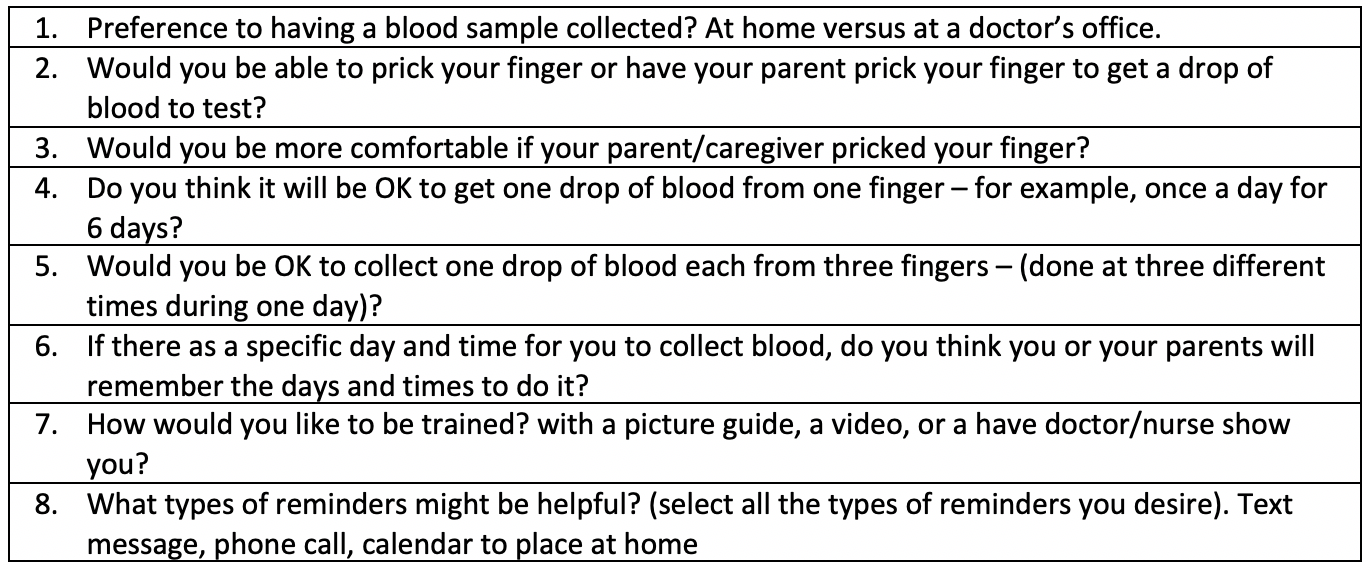
Table 1. Questions posed to the children focus group participants
Children’s focus group perspectives and results:
Almost all the participants preferred having blood collected via a finger prick as opposed to a venipuncture (Figure 2 left). Most of the participants preferred the option of having blood samples collected at home (without having to travel to a doctor’s office). Interestingly, 10 out of the 11 participants from Europe preferred the home collection option compared to nine out of 17 from North America (Figure 2 middle). When asked what the one thing they liked most with home sampling, 19 of the participants said it was the convenience and time savings (spending half a day at the doctor’s office and a couple of hours for travel consumes an entire day), not missing school, time away from other activities, busy schedule, etc. Other reasons included being able to sample in private and in a place they felt safe, not having to “explain to their friends” the reasons for missing school, being responsible for themselves and their health. One participant indicated “it will be a fun activity.” Overall, one of the most noteworthy take-aways was the childrens’ feedback that they need options.
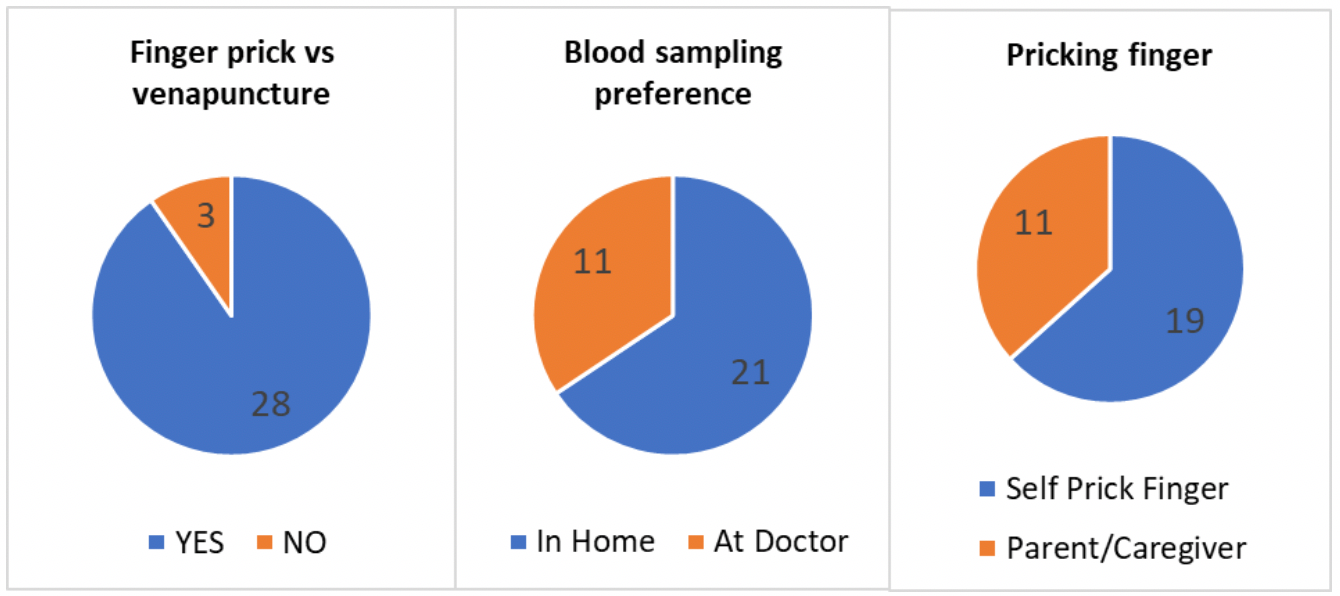
Figure 2: Blood sampling preferences: finger prick vs venipuncture (left), in home vs at doctor’s office (middle), and self prick vs have parent/caregiver perform the sampling (right).
The reasons cited for opting to have blood sampling at a doctor’s office were based on concerns around “messing up” the sample collection and compromising the results and the notion that the doctor’s office is more “official” and better trained to take the sample (even though it may be inconvenient to the patient). One participant indicated concern that the finger pricks may not heal and could affect the use of hands while a couple of participants indicated they disliked dealing with blood and therefore preferred having it done at the doctor’s office.
Self-sampling: Approximately two-thirds of the participants indicated they would be comfortable pricking their own fingers while the rest indicated they would rather have a parent or caregiver do it (Figure 2 right). When asked about the frequency of sampling-collecting one sample per day for six days or collecting three samples during three different times within a single day-a majority of the participants preferred the single sample per day but overall both collection options were acceptable by a majority (Figure 3).
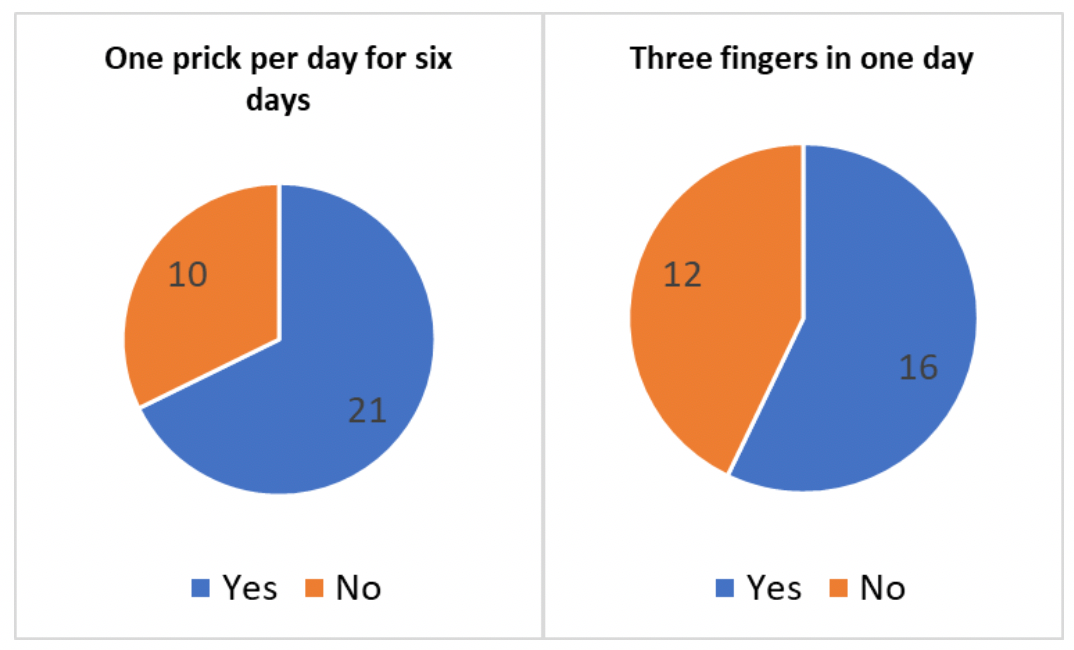
Figure 3: Preference on frequency of sampling: one finger prick per day for six days (left) versus three finger pricks in a single day (right).
Training and scheduling: Since the samples need to be collected according to a predefined schedule, 22 out of 28 participants responded that either they will remember, or their parents will remember to ensure the samples are collected. From a training perspective, the participants preferred the option of having a nurse train them (can be accomplished during the first visit to the clinic/doctor’s office) or to be trained via a video (Figure 4). When inquired about the most effective ways to contact them as a means of reminders for sampling, the most preferred option was text messages. Using calendar entries was also favorable while phone calls were the least favored (Figure 4 right). Other suggestions included reminders/alarms on phone (via an app or google calendar notification) and use of post-it notes.
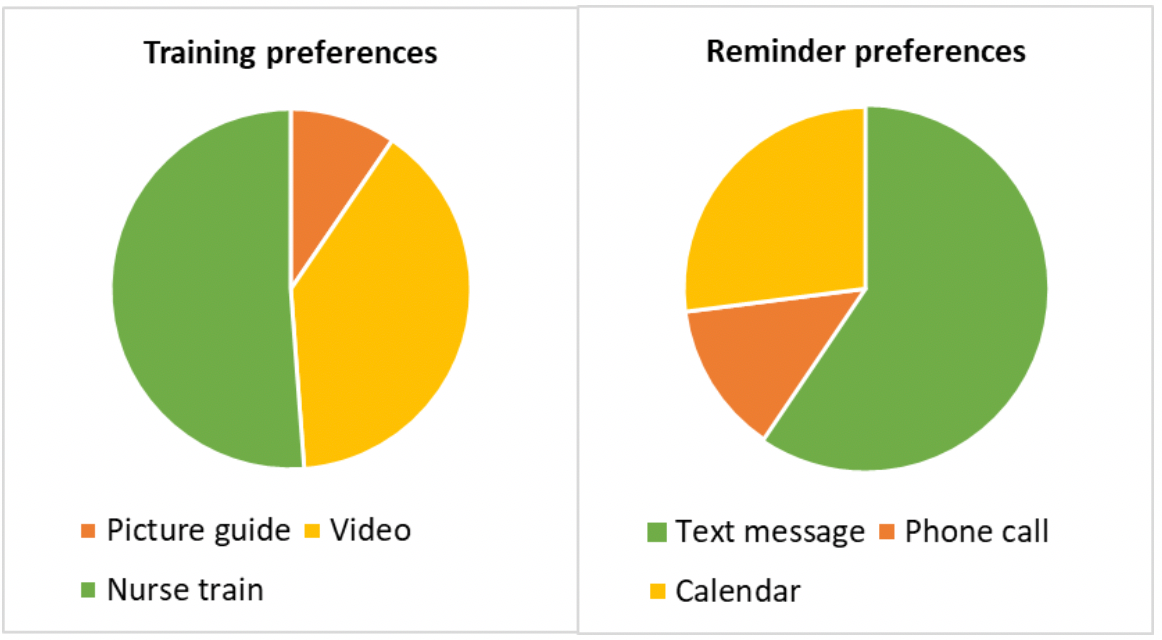
Figure 4: Preferences on training methods (left) and communications/reminders (right).
Limitations: The focus group activity was conducted in English; however, English was not the native language of all participants. Although the age ranged from 10-22 years, the majority of the participants were between the ages of 14-17 years. As the majority of children/participants live with chronic health conditions, the insights gained might not apply to a pediatric trial of acute illness.
Discussion
The focus group interactions enabled the capture of the patient’s voice regarding their preferences, perceptions, acceptability, and benefit trade-offs between treatments and the burdens of clinical trial participation. The study shows enthusiastic support from both focus groups (parents and children) for the adoption of a home-sampling, a DIY approach, for collecting small blood samples for monitoring one’s health. Some of the insights related to type of lancet to be used and the location of sampling was a significant operational consideration. It was also interesting to see that the children were willing to have multiple finger sticks to collect small blood samples as opposed to having to go to a clinic or doctor’s office and spend a significant amount of time there, missing school and other activities.
The participants displayed a high degree of enthusiasm and engagement and expressed concerns in their ability to correctly perform the collection without compromising the sample, ensuring the results are correct. This concern was clearly reflected in some of the responses., i.e., when they said they would do it but preferred to go to the doctor’s office because the doctor was more “official” to do it, and the concern that the participant might “mess up” the collection. One participant worried if it needed to be kept sterile while another was concerned about cost of shipping-both of which are legitimate questions.
Patient-centric DIY activities transfer the additional responsibility of performing the task, as well as ensuring proper documentation from the doctor’s office or clinic staff to the patient or parent/caregiver. This requires adequate training and training material. The involvement of focus groups provided invaluable patient perspectives and better understanding of the “human factor,” something that is almost always either neglected or taken for granted. Clearly, the learnings from these exercises, including the training and communication preferences, must be incorporated into clinical trial design and execution to enable improved participation of children/youth in clinical trials.
We have incorporated key learnings from these interactions in planning and designing specific pediatric trials, and based on very limited clinical experience to date, the overall acceptance by the clinicians, clinical sites, and patients has been positive.
Conclusions
The ability to collect the samples without having to travel to and spend time at a doctor’s office is attractive for patient recruitment and can potentially translate to faster enrollment. Adoption of a simple DIY device/technique that can collect small blood samples within the privacy of a patient’s home also enables more frequent monitoring of the patient’s health during a pediatric trial or research and enables the transformation of clinical trials to be more patient-centric.
However, the adoption and implementation of novel methods and technologies, especially to be used by the patient within a home setting, can be challenging. The involvement of patient focus groups (and parents in the case of pediatric studies) exemplifies patient-focused drug development efforts by providing valuable insights and perspectives that help identify the needs and develop best practices that can minimize the burdens of clinical trial participants.
Adequate training and adequate follow-up communications, including reminders, will be a key factor in determining the degree of success and patient compliance in using an at-home blood sampling option.
Acknowledgments
The authors wish to thank the iCAN members and Lilly Parent Volunteer Group members who participated in the focus group activities, and Dr. A.J. Allen for review of ethical aspects of youth focus group activities.
Enaksha Wickremsinhe, Research Advisor; Mary Short, Senior Research Advisor; Brandon Talkington, Associate Consultant, all of Eli Lilly and Company. Leanne West, Chief Engineer of Pediatric Technology, Georgia Institute of Technology and President, International Children’s Advisory Network.
References
- Christensen ML. Best pharmaceuticals for children act and pediatric research equity act: time for permanent status. J Pediatr Pharmacol Ther. 2012;17(2):140-1.
- Regulation (EC) No. 1901/2006 of the European Parliament and of the Council (December 12, 2006)2006. Available from: https://ec.europa.eu/health//sites/health/files/files/eudralex/vol-1/reg_2006_1901/reg_2006_1901_en.pdf. Accessed July 17,2019.
- Schmidt C. Many Pediatric Studies Are a Waste of Time2017. Available from: https://www.scientificamerican.com/article/many-pediatric-studies-are-a-waste-of-time/.
- Kern SE. Challenges in conducting clinical trials in children: approaches for improving performance. Expert Rev Clin Pharmacol. 2009;2(6):609-17.
- Patel SR, Bryan P, Spooner N, Timmerman P, Wickremsinhe E. Microsampling for quantitative bioanalysis, an industry update: output from an AAPS/EBF survey. Bioanalysis. 2019;11(7):619-28.
- Spooner N, Anderson KD, Siple J, Wickremsinhe ER, Xu Y, Lee M. Microsampling: considerations for its use in pharmaceutical drug discovery and development. Bioanalysis. 2019;11(10):1015-38.
- FDA. Patient Engagement Collaborative2018. Available from: https://www.fda.gov/patients/learn-about-fda-patient-engagement/patient-engagement-collaborative. Accessed July 20, 2019.
- EMA. Concept paper on the involvement of children and young people at the Paediatric Committee (PDCO)2012. Available from: https://www.ema.europa.eu/en/documents/scientific-guideline/concept-paper-involvement-children-young-people-paediatric-committee-pdco_en.pdf. Accessed July 17, 2019.
- Neoteryx. Smarter Simple Blood Collection 2019 Available from: https://www.neoteryx.com/.
- About iCAN Available from:https://www.icanresearch.org/about. Accessed July 17, 2019.
Improving Relationships and Diversifying the Site Selection Process
April 17th 2025In this episode of the Applied Clinical Trials Podcast, Liz Beatty, co-founder and chief strategy officer, Inato, discusses a number of topics around site engagement including community-based sites, the role of technology in improving site/sponsor relationships, how increased operational costs are impacting the industry, and more.
Behind the Buzz: Why Clinical Research Leaders Flock to SCOPE Summit
February 7th 2025In this episode, we meet with Micah Lieberman, Executive Conference Director for SCOPE Summit (Summit for Clinical Ops Executives) at Cambridge Innovation Institute. We will dive deep into the critical role of collaboration within the clinical research ecosystem. How do we bring together diverse stakeholders—sponsors, CROs, clinical trial tech innovators, suppliers, patients, sites, advocacy organizations, investors, and non-profits—to share best practices in trial design, program planning, innovation, and clinical operations? We’ll explore why it’s vital for thought leaders to step beyond their own organizations and learn from others, exchanging ideas that drive advancements in clinical research. Additionally, we’ll discuss the pivotal role of scientific conferences like SCOPE Summit in fostering these essential connections and collaborations, helping shape the future of clinical trials. Join us as we uncover how collective wisdom and cross-industry partnerships are transforming the landscape of clinical research.
FDA-Approved Gene Therapy Beqvez Shows Sustained Efficacy, Safety in Long-Term Hemophilia B Trial
April 17th 2025Beqvez (fidanacogene elaparvovec), an FDA-approved one-time gene therapy for hemophilia B, demonstrated sustained factor IX expression, low bleeding rates, and a favorable safety profile over long-term follow-up.